The Supplemental Nutrition Assistance Program (SNAP) recently modified its income limitations and benefit amounts as of October 1. This change, part of a yearly cost-of-living adjustment, aims to keep the program in line with inflation while also making it more accessible to individuals.
SNAP remains an important resource for those experiencing food poverty in the United States, offering necessary assistance in obtaining nutritious food. In addition to low-income individuals and families, qualifying students may apply if they meet certain conditions.
Increase in income limits to qualify for SNAP benefits
With the recent modifications, the monthly income limit for a single person to qualify for SNAP is now $2,510, a significant increase over previous years. This change has a direct impact on students and other groups that previously did not reach the income requirement for SNAP assistance.
According to Julia Morrill, director of the University of Oregon’s Basic Needs Program, the greater income restriction has created new opportunities for students who previously earned slightly more than the prior level, which was roughly $1,500 per month.
Students who are enrolled in six or more undergraduate credits or five graduate credits and meet one extra qualifying criterion will now have easier access to SNAP benefits. This adjustment makes the program more accessible to students who may require more assistance to manage their food spending.
What can you buy with SNAP benefits?
SNAP funds are designed for the purchase of food and nonalcoholic beverages. These advantages can be utilized at most grocery stores to purchase fruits and vegetables, meat, fish, bread, cereals, and other necessities.
However, there are limitations. SNAP payments cannot be used to purchase tobacco, alcohol, prescriptions, supplements, or non-food items. Additionally, heated or prepared items cannot be purchased using SNAP benefits.
For many students, SNAP benefits are a valuable resource, allowing them to expand their choices for nutritional foods. This program assists folks who struggle to obtain healthy foods, thereby improving their entire health and well-being. Access to appropriate nourishment can improve focus and academic performance while minimizing the financial strain of purchasing food.
How to apply for SNAP as a student
Applying for SNAP benefits may seem difficult at first, especially given the documentation required. Students can begin their application on the Oregon Department of Human Services‘ website or by visiting one of its offices. After filing the application, an interview with a social worker from the Department of Human Services is required. This interview can be conducted in person or via phone.
Morrill leads the Basic Needs Program team at the University of Oregon, which assists students with the application process by helping them through necessary documentation and resolving issues regarding the forms. Although the team cannot execute applications on students’ behalf, their counsel helps students gain access to these benefits.
Stores that accept SNAP benefits
Most grocery stores and supermarkets accept SNAP, and customers can check each store’s website or ask in-store for confirmation. The only SNAP-accepting business on the University of Oregon campus is Agate Street Market in Unthank Hall, where students can buy packaged foods and deli options including sandwiches and salads.
Restrictions on SNAP eligibility for students with meal plans
Students who reside in university housing with meal plans face special SNAP qualifying requirements. If a student’s meal plan meets more than 51% of their food needs, they may not be eligible for SNAP.
In contrast, if the meal plan only covers half of the cost, the student may be eligible if they meet the other income standards. This restriction is in place to prevent overlapping benefits, as university meal plans are often designed to meet a major amount of the dietary needs of students living on campus.
SNAP benefits as a support for healthy eating
SNAP not only provides economic relief to those experiencing food insecurity, but it also promotes the adoption of healthier eating habits. Having access to a range of fresh foods directly affects kids’ well-being. The flexibility to choose healthful foods without having to worry about fitting them into a limited budget improves both quality of life and academic achievement.
With increased income restrictions and benefit adjustments, SNAP is responding to the needs of people who rely on it the most, while remaining an essential support tool in the face of rising living costs.
Note: Thank you for visiting our website! We strive to keep you informed with the latest updates based on expected timelines, although please note that we are not affiliated with any official bodies. Our team is committed to ensuring accuracy and transparency in our reporting, verifying all information before publication. We aim to bring you reliable news, and if you have any questions or concerns about our content, feel free to reach out to us via email. We appreciate your trust and support!
ChiefsFocus is a dedicated news writer with extensive experience in covering news across the United States. With a passion for storytelling and a commitment to journalistic integrity, ChiefsFocus delivers accurate and engaging content that informs and resonates with readers, keeping them updated on the latest developments nationwide.









